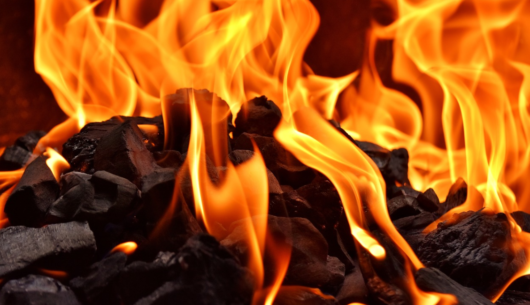Blog
Fireplace in a passive or energy-efficient house
Table of contents
- Fireplace in a passive house
- Bio-fireplace – what is it?
- Fireplace for an energy-efficient house
- What does it look like in practice?
When dreaming of our own home, we always imagine quiet and relaxing evenings by the fireplace. It must be admitted that it is almost an obligatory element in every home, even if it is only a decoration and we do not use it to heat the interior of the property.
 In houses with classic thermal parameters, the choice of a fireplace depends largely on taste and budget. In energy-efficient or passive buildings, it is necessary to take into account many other factors that will affect the comfort, satisfaction and safety of tenants or guests. Which fireplace in a passive house should you choose to be satisfactory? Check out some important information that will make the purchase less complicated.
In houses with classic thermal parameters, the choice of a fireplace depends largely on taste and budget. In energy-efficient or passive buildings, it is necessary to take into account many other factors that will affect the comfort, satisfaction and safety of tenants or guests. Which fireplace in a passive house should you choose to be satisfactory? Check out some important information that will make the purchase less complicated.
Fireplace in a passive house
Taking into account that the construction of a passive house requires owners to use solutions that minimize energy consumption, it is necessary to consider only those solutions that are as effective as possible. Taking into account that a fireplace in most cases is designed to heat one room, we cannot include it as a satisfactory proposal. There is an exception to this. If the fireplace will act as a stove and additionally heat other rooms without unhealthy air movement.
The most popular structures that are used in passive houses include, m.in, among others:
- tiled stoves,
- modern hybrid oven,
- bio-fireplaces
- fireplace stoves.
Which of these options is the best choice for a passive house? It is worth noting that each has a number of advantages and disadvantages. In addition, they differ significantly in appearance and size. Therefore, it is worth getting acquainted with each proposal in person and making a decision based on individual needs and expectations.
Bio-fireplace – what is it?
Is a bio-fireplace in a passive house is the best solution? If you only care about aesthetic values, then yes. Bio-fireplaces are nothing more than structures operating on the basis of liquid fuel. As a result, they do not need chimney systems, which makes them equally popular among people who have apartments in blocks of flats. By using this type of proposal, you will eliminate the difficulty of lighting classic fuel (e.g. wood). The only disadvantage is the low heating power, which should not be a particular problem in the case of passive houses.
Fireplace for an energy-efficient house
We would like to remind you at the very beginning that passive houses are those that require the consumption of no more than 50kWh/m2 of energy per year. Does it matter when choosing a fireplace or a heating system? Well, yes, and really big, because poorly matched components, a solution and a fireplace for an energy-efficient house can significantly contribute to increasing the level of energy consumption.
So what to do if you don’t know which heating system will work in your energy-efficient home? Consult specialists. Even an additional paid consultation can significantly affect the savings that will be noticeable in the first months.
Let’s go back to the issue related to the use of fireplaces in energy-efficient houses. They are usually equipped with a large front glass of the insert. Of course, this guarantees great visual effects, because a live fire will add the warmth of a home to the interior of the room, but it will also cause huge losses of about 30 – 60% of its thermal power.
What does it look like in practice?
Assuming that the area of the room (in which the fireplace is located) is 50 m2 and its maximum heat loss is at the level of 50 m2 x 50 W/m2, we get the result of 2500 W.